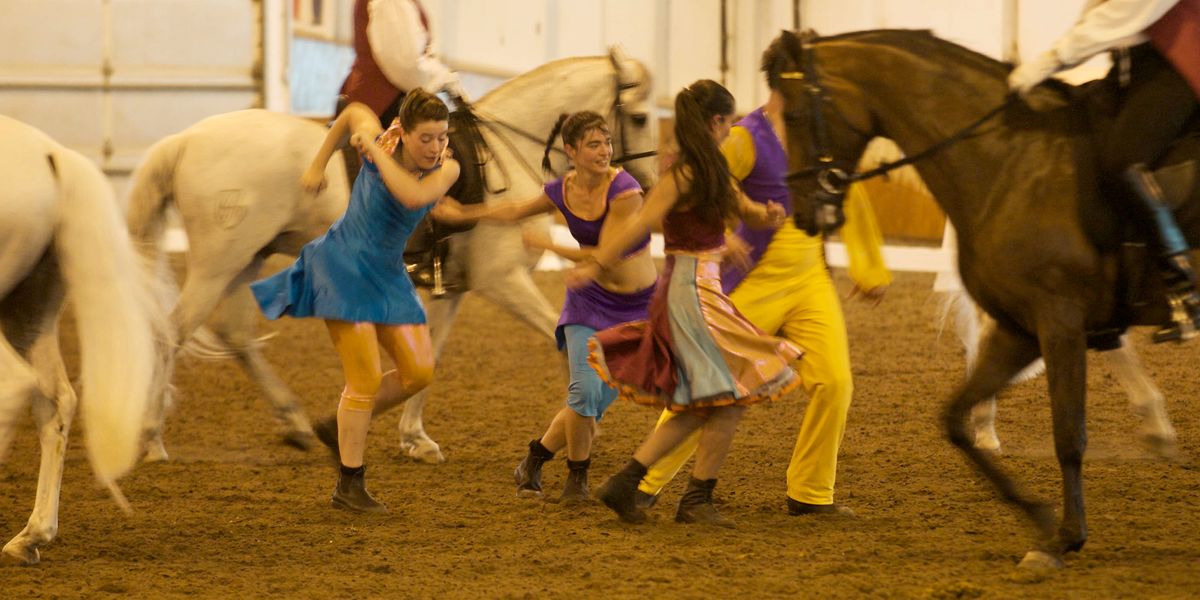When Your Dance Partner Is a Horse
Visually stunning, sensitive and, yes, four-legged, horses make rewarding dance partners, says JoAnna Mendl Shaw, artistic director of The Equus Projects. Her company performs site-specific works that often bring dancers, horses and their riders into shared landscapes, from rural farm fields to urban parks.
But her work isn’t about riding tricks. Performing with horses, dancers develop real-time decision-making and leadership skills. “Dancers sponge energy off other moving bodies—they don’t have to be human,” she says. Shaw teaches monthly Dance Differently Labs in New York City that focus on a practice of “physical listening” and is working on a book about her more than 20 years of combining dance with horsemanship.
She recently spoke with Dance Magazine about how she got into this specialty, why the rehearsal process has to take equine behavior into account and what it feels like to perform alongside horses.

Jennifer Ferran, Courtesy Shaw
How she got started
“Our first piece came about
because I was invited to choreograph for an anniversary celebration of the Five College Dance program, and I wanted to do something that would attract attention. I thought, What if we put dancers with ridden horses? I’d only ridden maybe five times—I wasn’t what you’d call a barn rat. But it became fascinating to see how well the dancers could connect to the horses.”
What rehearsals are like
“Our creation process must factor in equine behavior. With a riderless horse, we rarely rehearse in the exact same order every time. If you practice a piece over and over, they will memorize the choreography and skip to the end just to be done. I made that mistake the first time we created a commissioned work in 2004. You want the horse to be thinking during the performance, not on autopilot.
“Because the company doesn’t own horses, we are always working with local horses, likely for the first time, when we get a commission.
“We work 12-hour days on location, and there is no marking around the horses. It takes a lot of stamina.”
How she decides partnerships
“Everything you do means something to the horse—every flick of the hand. To partner the dancers with horses I consider their personalities and horsemanship experience. I’ll put a dominant horse with a confident dancer who can lead, and a sensitive horse with an introverted but empathetic, patient dancer.”
What it’s like to set choreography on unpredictable performers
“I always create a storyboard, because the steps won’t be the same every time. The piece always begins a certain way (for example, with dancers and horses weaving back and forth) and follows the same trajectory. But the dancers can’t just memorize a sequence of steps. They need to make adjustments at any time.”
What it feels like to perform with a horse
“It feels like this: ‘Oh my god, she’s inches from me, her ears are back, she’s got hundreds of pounds of weight behind her…I might cry, it’s so beautiful! But also I need to get her to turn. Okay, now she’s trying to take over—she’s testing me. I’ll stop. Exhale. Now she’s exhaling with me. That was magic!’ ”
What success looks like in this work
“The measure of success for a show is different. Traditionally, you might say, ‘That was a good run for me.’ But in our work, you might think, ‘I felt good, but my horse wasn’t with me.’ Or ‘Everything went wrong and I just got lucky.’ What we do requires humility. It acknowledges the power of nature and that the world is a complex place.”




